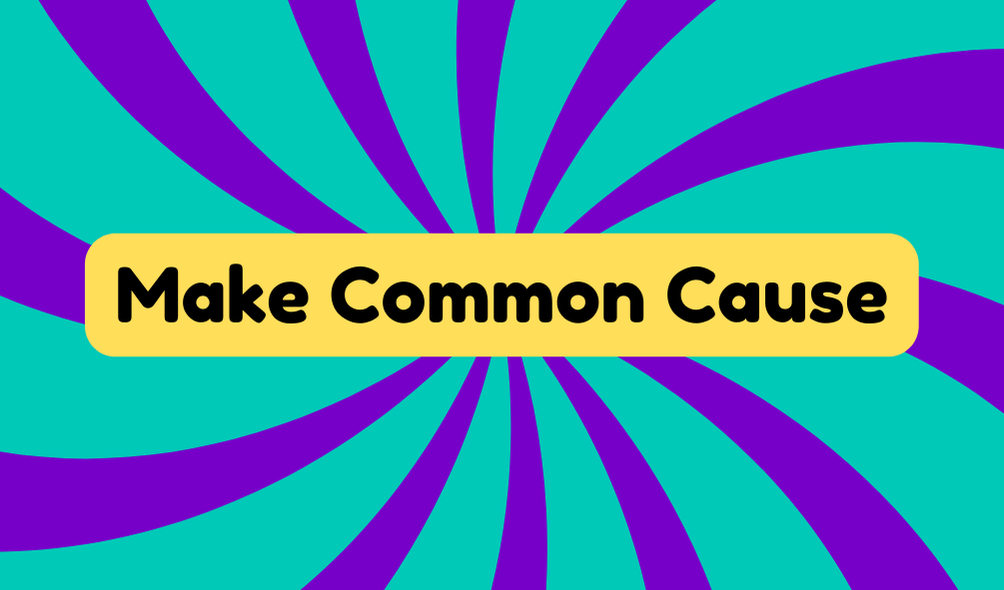Making common cause means uniting with others for a shared goal, even when you have different perspectives. It's about setting aside disagreements to tackle societal issues together, like local protests against environmental harm or advocacy for justice. The term has roots in history, where diverse groups formed alliances for common objectives. In today's polarized climate, focusing on a common cause can foster creativity and dialogue, helping diverse communities find common ground. This concept not only enhances efforts but often leads to meaningful change. If you're curious about how this applies to daily situations, there's much more to explore.
Synonyms
When you think about the concept of "making common cause," several synonyms come to mind that capture its essence. These terms reflect the spirit of collaboration, even among differing viewpoints. Understanding these synonyms can help you recognize the value of shared objectives in today's complex scenarios. Consider these key phrases:
- Joint endeavors
- Collaborate for a cause
- Uniting efforts
- Common ground
- Collective action
While each term emphasizes cooperative efforts, skeptics might point out that true unity is often a facade. Real collaboration requires sincerity and a genuine desire to put aside differences. When you see these synonyms in action, question whether they're driving real change or just creating the illusion of progress. That's essential in today's increasingly polarized society.
Example of Sentences
Examples of how people make common cause illustrate the power of collaboration, often amid differences. You'll find that when groups unite for common objectives, incredible things can happen. Here are some powerful instances:
- Disagreements set aside for a common cause.
- Different agendas align for homeland defense.
- Environmental protests unite locals against factories.
- Local grocers fight against unfair tax incentives from big-box stores.
- Cooperation leads to achievable agreements.
These collaborative efforts prove that innovation thrives when diverse voices join forces. However, it is crucial to remain aware of potential conflicts and the challenges of aligning interests. Understanding these dynamics can help you navigate the nuances of teamwork, fostering genuine partnerships that drive meaningful change. Embrace the complexity and pursue your common goals together!
Origin
The phrase "common cause" frequently traces its roots back to the 17th century, where its early idiomatic usage reflected shared aims among groups. Back then, people recognized that forming historical alliances could help them achieve collective goals, even if they had differing opinions. This sentiment paved the way for the fuller expression "make common cause," which emerged in 19th-century politics. By the 1800s, debates in the House of Commons illustrated how various factions united for shared objectives. While it might seem idealistic, this concept holds value today, showing that collaboration can arise from necessity rather than agreement. Understanding these origins emphasizes the importance of setting aside personal differences to tackle significant issues in a constantly evolving society.
Collocations
Understanding the historical context of "common cause" helps highlight its various collocations, which contribute to its versatility in language. These phrases illustrate how the term aligns with key concepts in today's society, particularly in collaborative efforts and coalition building.
- Common cause for justice
- Common cause in advocacy
- Common cause with allies
- Common cause among communities
- Common cause for change
Such collocations show that, while the intent may be noble, they also reflect the complexities of human cooperation. When you see these phrases, remember that shared goals don't always mean harmony. Sometimes, coalition building requires maneuvering differences. As you engage with these terms, stay aware of the underlying dynamics that shape successful partnerships and collaborative efforts.
How to Use in Everyday Language
Many people find that using the term "common cause" can effectively convey the spirit of collaboration in their discussions. You can incorporate it into your everyday language by aligning it with your collaboration strategies. When discussing projects or initiatives, emphasize your mutual goals, making sure everyone understands the shared purpose. Here's a handy table to help you frame your conversations:
| Context | Example Phrase | Purpose |
|---|---|---|
| Community projects | "We should make common cause." | Foster unity |
| Social movements | "Let's unite for a common cause." | Inspire collective action |
| Workplace initiatives | "Collaboration is our common cause." | Enhance teamwork |
| Environmental efforts | "We're in this for a common cause." | Build awareness |
Using this approach strengthens communication and boosts engagement.
Why Is It Still Relevant Today?
Common cause remains highly relevant today due to the increasing polarization in society. In a world where disagreements seem to dominate, common cause movements offer a pathway for collective action benefits that can't be ignored. You might wonder if people can truly unite across various divides, and the answer lies in shared goals. When individuals from diverse backgrounds come together, they create stronger impacts than they could alone. This unity not only addresses pressing issues but fosters innovation and encourages dialogue. As we face environmental and social challenges, understanding the importance of making common cause is essential. Embracing collective action isn't just idealistic; it's a necessity for overcoming the barriers that divide us. Let's not underestimate its power.







